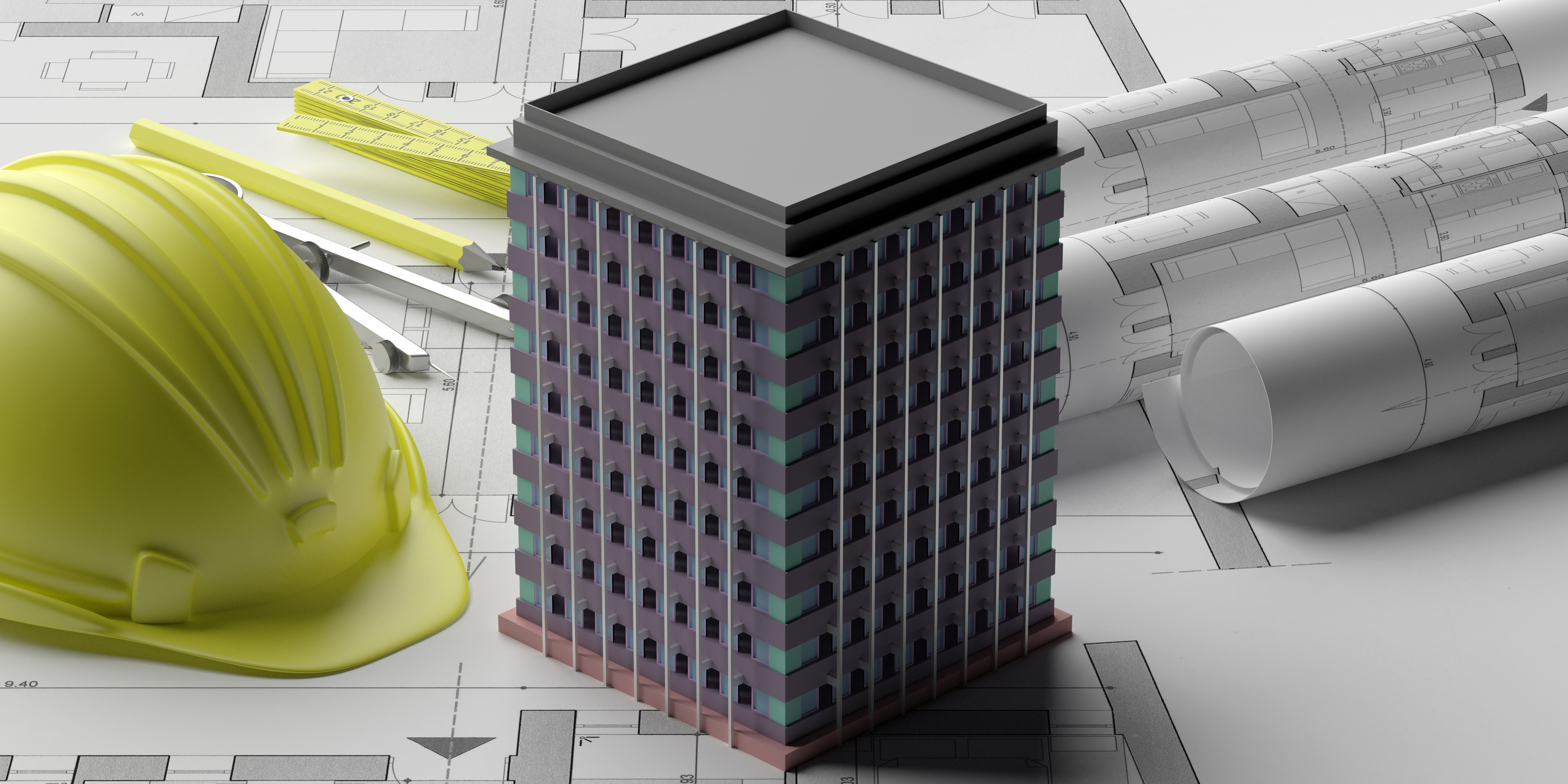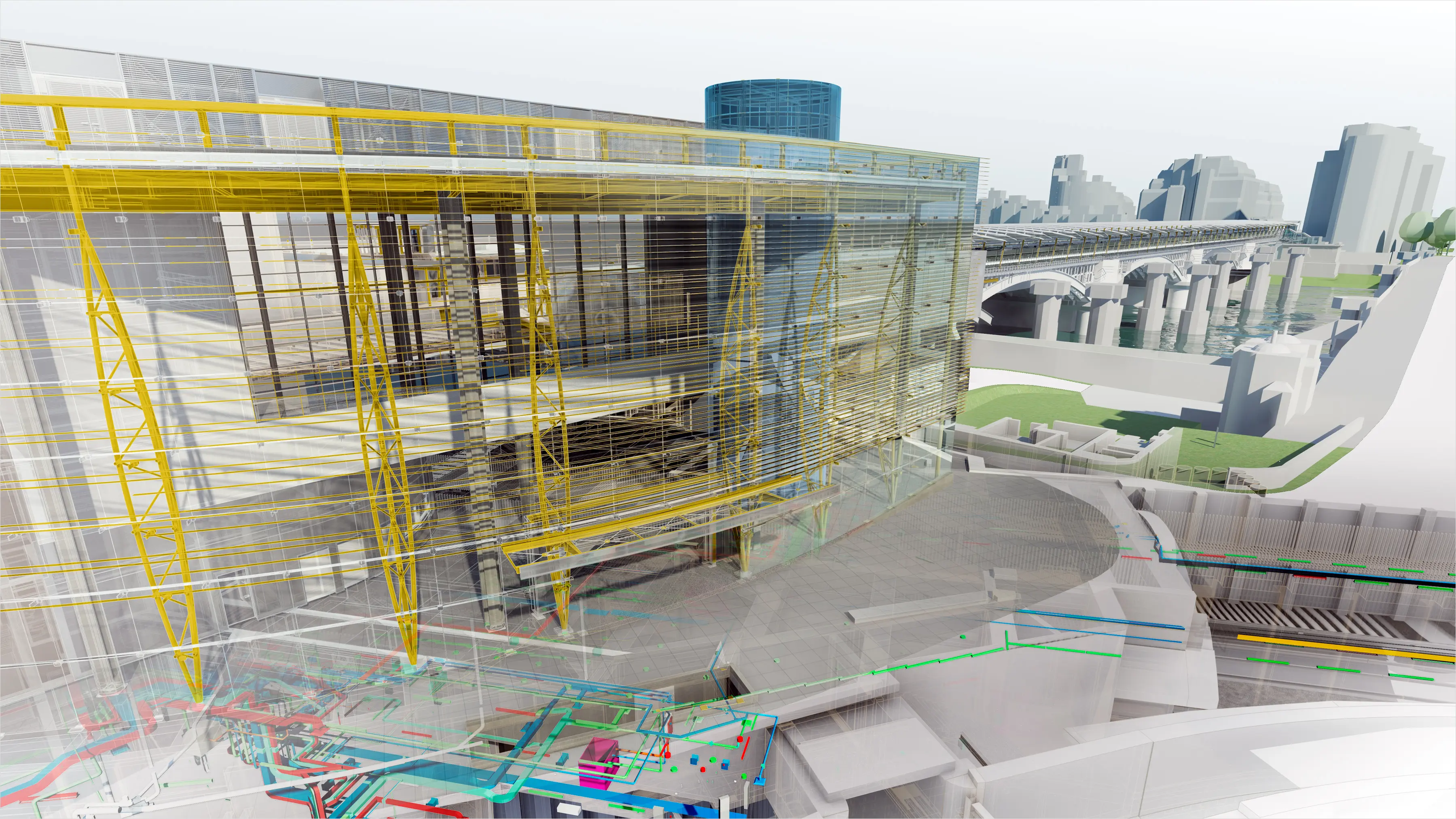BIM Integration
Our BIM Integration begins with workflow assessments to define template deployment, model handoffs, and compliance checkpoints. We leverage a library of 300+ parametric families to ensure LOD400-ready models, with automated clash detection at every coordination milestone and federated cloud reviews for real-time collaboration. Automated LOD validation, peer reviews, and role-based training ensure quality and empower your team with ongoing analytics-driven improvements.

Strategic Planning & Workflow Assessment
Before any models are created, we collaborate with stakeholders to audit existing processes, data requirements, and technology capabilities. This initial assessment identifies bottlenecks in your BIM workflows—whether in model creation, coordination, or documentation—and establishes clear objectives for template deployment, collaboration milestones, and compliance checkpoints. By defining a tailored BIM Integration roadmap aligned with project goals and organizational standards, we ensure that every subsequent phase is grounded in efficiency and clarity.
Template Library & Parametric Families
Central to our BIM Integration is a robust library of electrical and mechanical templates, backed by a $500 000 investment and maintained by over 25 dedicated experts. Comprising more than 300 parametric families, these templates guarantee LOD400 readiness from the outset, reducing manual modeling effort and enforcing consistency across disciplines. Regular updates incorporate the latest code revisions, client branding requirements, and best-practice enhancements—ensuring your project benefits from a living library that evolves with industry standards.

Clash Detection & Model Coordination
We embed automated clash-detection routines into every coordination milestone, running interference checks as soon as federated models are available. Our BIM coordinators facilitate cross-discipline workshops—virtually or on-site—using real-time model reviews to resolve spatial conflicts before they impact construction. This proactive clash management reduces RFIs by up to 60% and safeguards project schedules by eliminating on-site rework and coordination delays.
Federated Collaboration & Cloud Platforms
Synchronization across teams is achieved through federated model setups and cloud-enabled review environments. Architects, structural engineers, and MEP specialists all access the latest federated model, ensuring that updates—whether equipment relocations or design changes—are instantly visible to every stakeholder. Version control, change-tracking, and automated merge routines prevent data silos and foster transparent communication throughout the project lifecycle.
Documentation & Asset Handover
We generate construction documents directly from coordinated BIM models, embedding metadata for equipment schedules, room data sheets, and system specifications. For facilities management, we produce COBie-compliant asset registers and interactive 3D PDFs that map model data to real-world maintenance workflows. This seamless transition from design to operations guarantees that as-built information remains accurate, accessible, and actionable throughout the building’s lifecycle.
Level of Development (LOD) Management
Maintaining the correct Level of Development is critical for trust in BIM data. We enforce LOD requirements through template-driven workflows and automated validation checks, verifying that each element meets agreed-upon detail and information standards. Peer reviews, model audits, and clash-free validations are built into our quality-control processes—ensuring deliverables adhere to international guidelines and client specifications without ambiguity.

Training & Technical Support
Empowering your team is integral to sustainable BIM Integration. We deliver role-based training—from Revit fundamentals and template administration to advanced Dynamo scripting and custom plug-in usage. Comprehensive documentation, video tutorials, and hands-on workshops enable users to extend and customize tools autonomously. Dedicated support channels and periodic “BIM clinics” ensure rapid issue resolution and continuous skill development.
Analytics & Continuous Improvement
Our BIM Integration doesn’t end at go-live. We track key performance indicators—model delivery timelines, clash-resolution rates, and template utilization metrics—to identify areas for refinement. Post-project reviews feed data-driven insights back into our BIM library and workflows, driving iterative improvements. This commitment to continuous optimization keeps your BIM environment aligned with evolving technologies and best practices, securing lasting value from your investment.